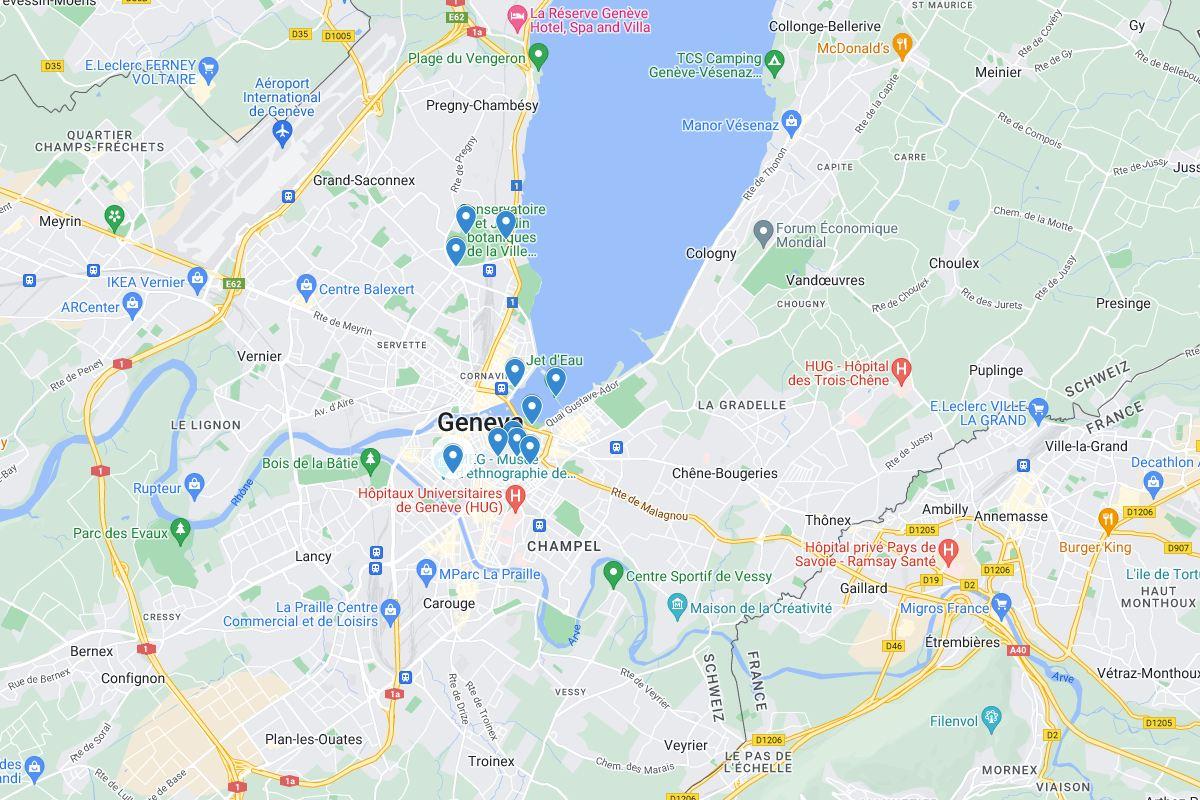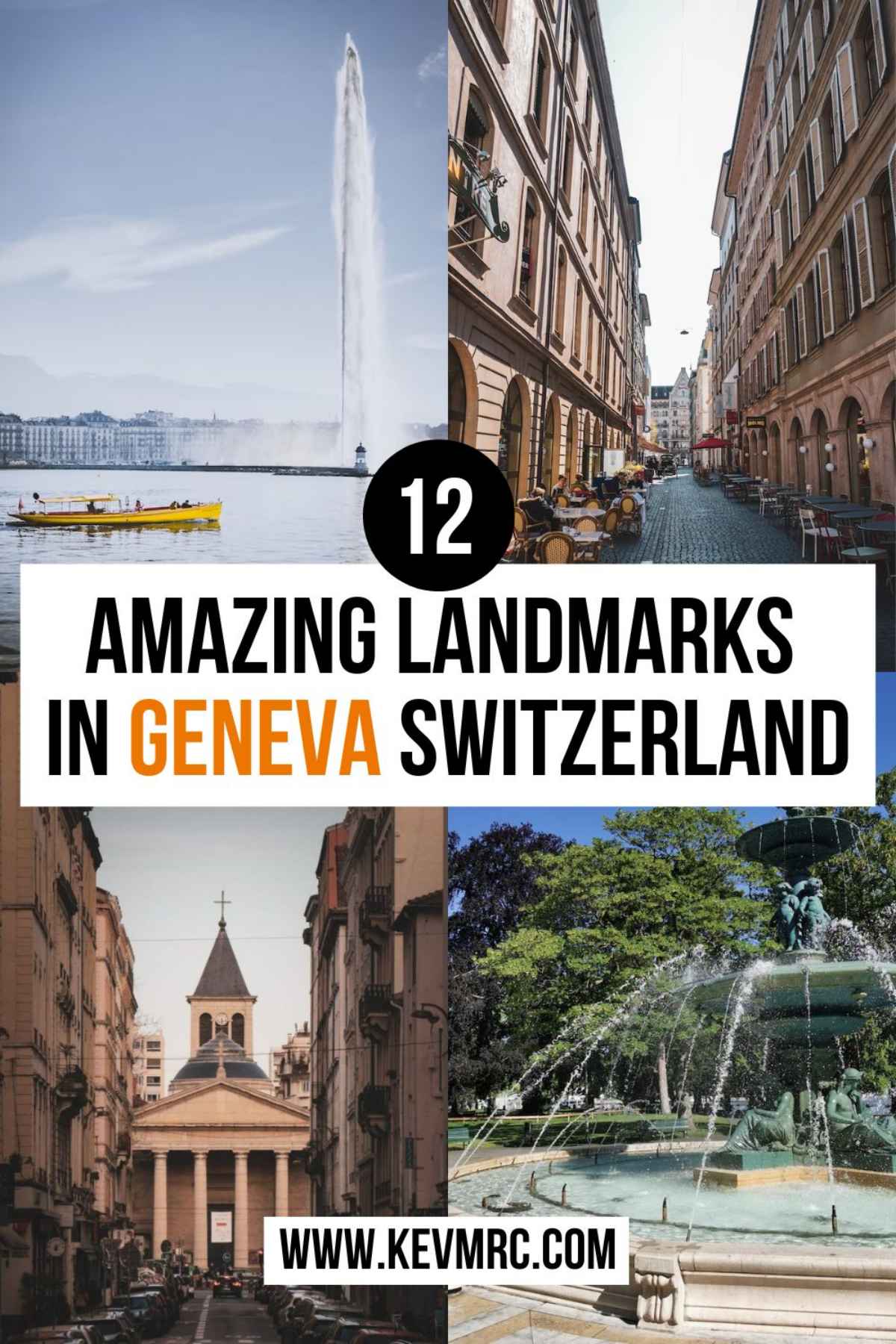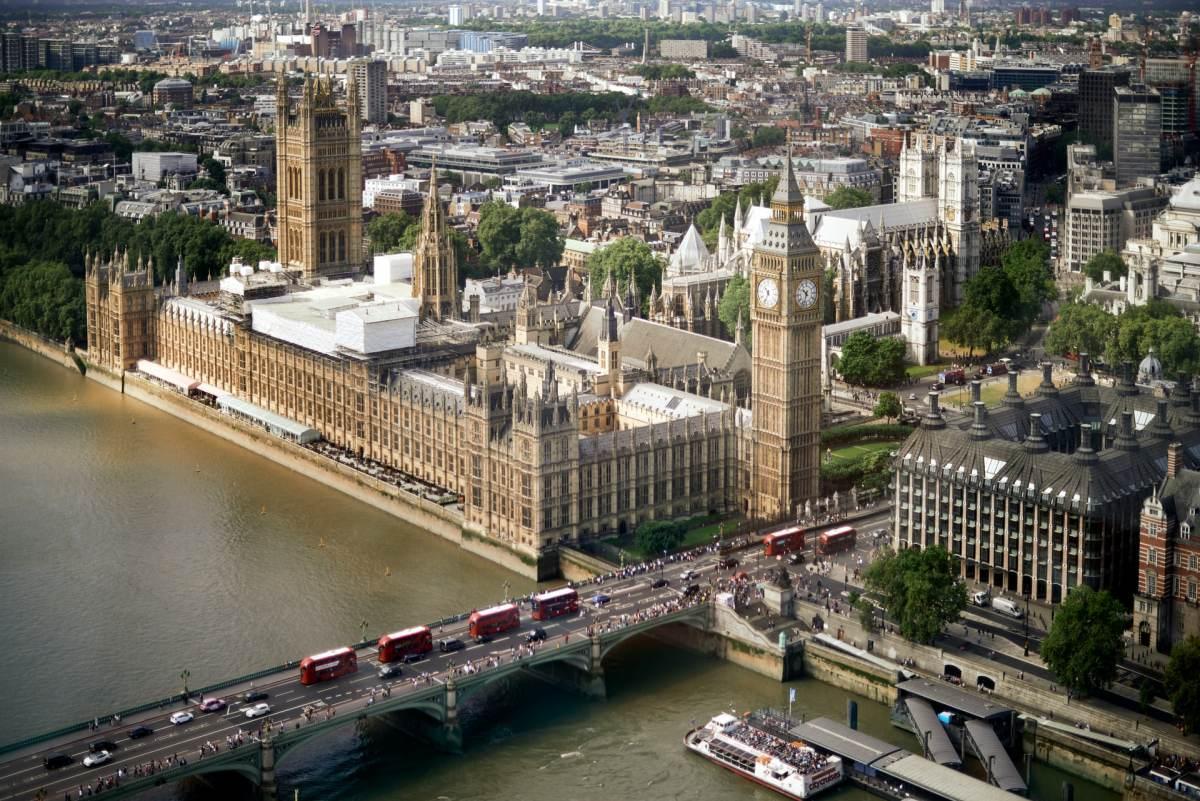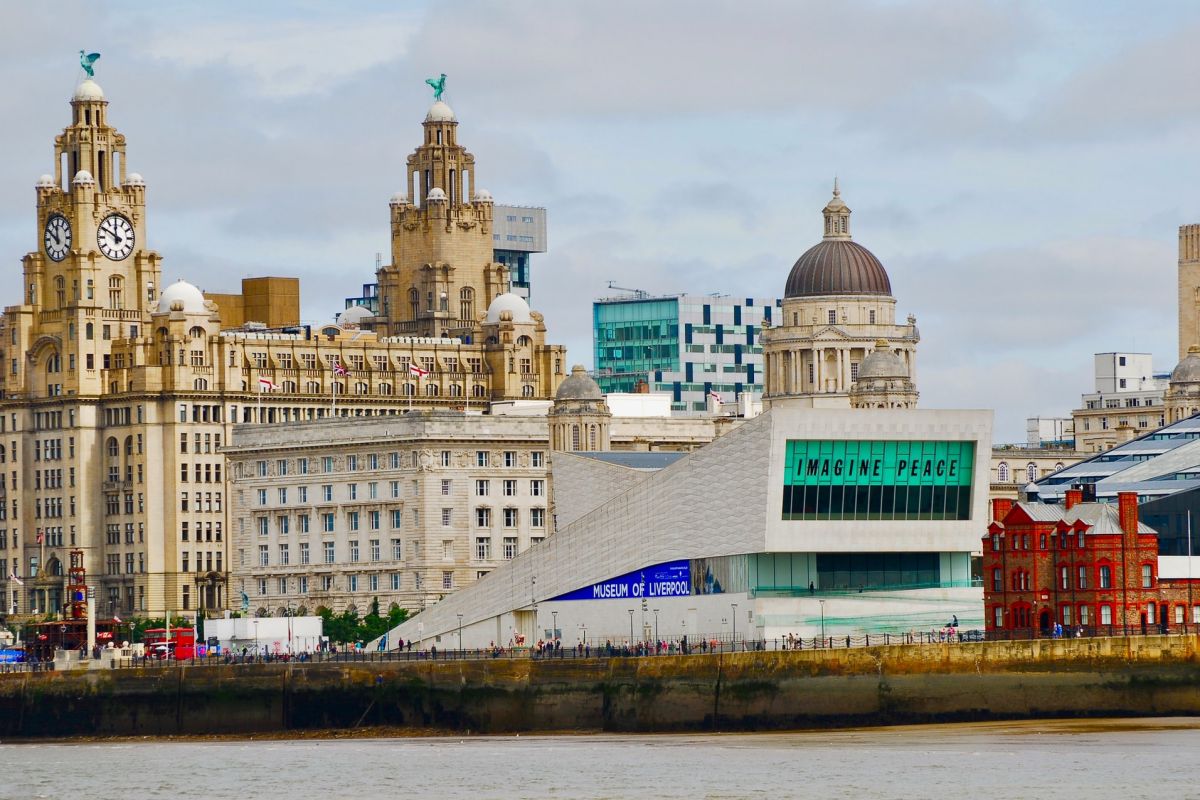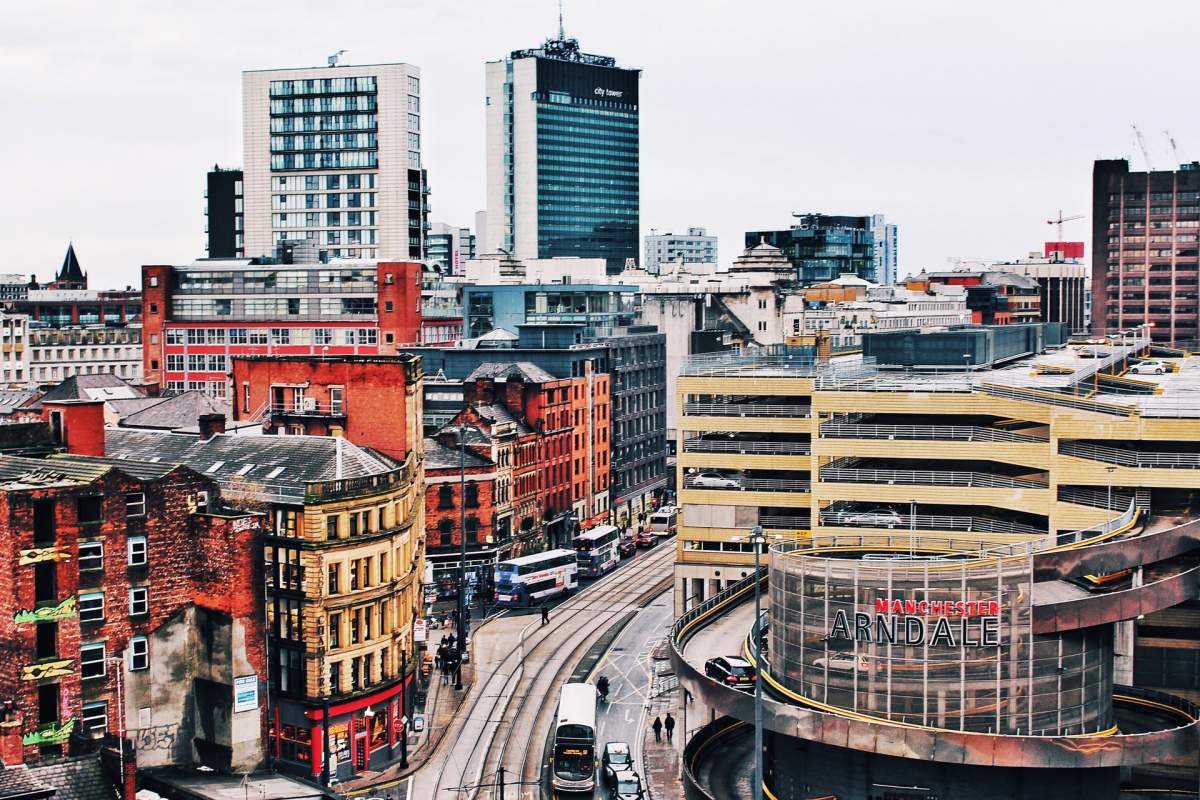12 Famous Landmarks in Geneva, Switzerland (100% worth a visit)
Located in Switzerland on the shores of the wonderful Lake Geneva in the Alps, not far from the French border, Geneva is a city full of charm.
Both a business and a tourist city, dynamic, young and ideally situated between lake and mountains, the city is packed with some of Switzerland’s absolute gems. If you’re visiting, you won’t run out of amazing things to see and do here, trust me!
Let’s discover together 12 of the most famous landmarks in Geneva! 🚀
TABLE OF CONTENTS [show]
Full List of the 12 Most Famous Geneva Landmarks
Here are 12 of the most popular landmarks in Geneva you can’t miss if you’re visiting the city:
- Lake Geneva Water Fountain
- Lake Geneva
- Old Town
- St. Pierre Cathedral
- Palais des Nations
- Broken Chair
- Botanical Garden
- Jardin Anglais
- Brunswick Monument
- Art and History Museum
- Reformation Wall
- Philippe Patek Museum
Keep scrolling to learn more and get details about each of these landmarks and get the map. 👇
On you’re way to Geneva, or already there? Book your City Pass here to enjoy free transportation and access +40 landmarks & tourist attractions.
1. Lake Geneva Water Fountain
Also known as the Jet d’Eau, the Water Fountain is Geneva’s most famous tourist attraction.
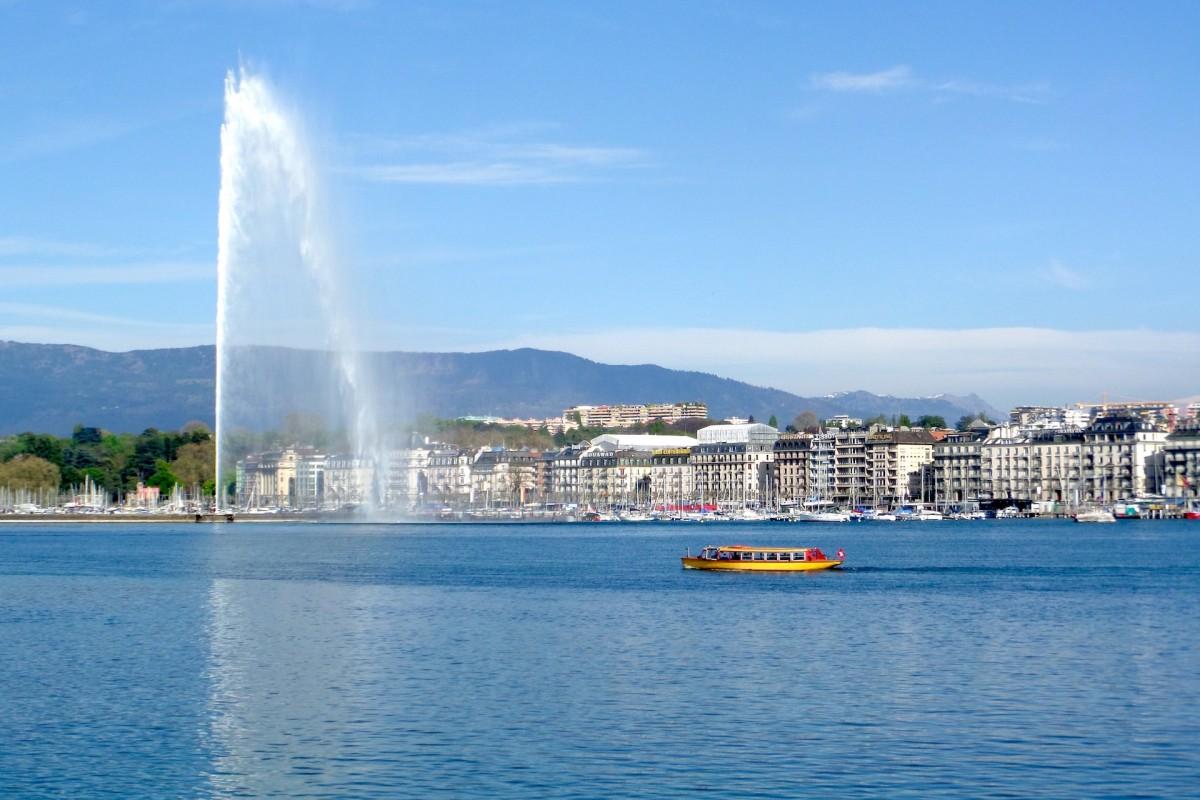
Situated on Lake Geneva, this massive geyser has been operational since 1891. Initially constructed to regulate waterworks pressure, the fountain emerged as a result of the excess pressure and eventually became an iconic symbol of the city.
The Jet d’Eau reaches astonishing heights, soaring up to 140 meters, and propels water with incredible speed, reaching up to 200 kilometers per hour. With a staggering flow rate of more than 500 liters of water per second, it’s no surprise that it can be observed from great distances. However, you might not be able to see it if you’re in Geneva in winter as the fountain operates only from 10 am to 4 pm.
2. Lake Geneva
Stretching in the elegant shape of a crescent along the border of France and Switzerland, Lake Geneva (also known as Lac Léman) is the largest lake in the Alpine region and one of Switzerland’s most beautiful places.
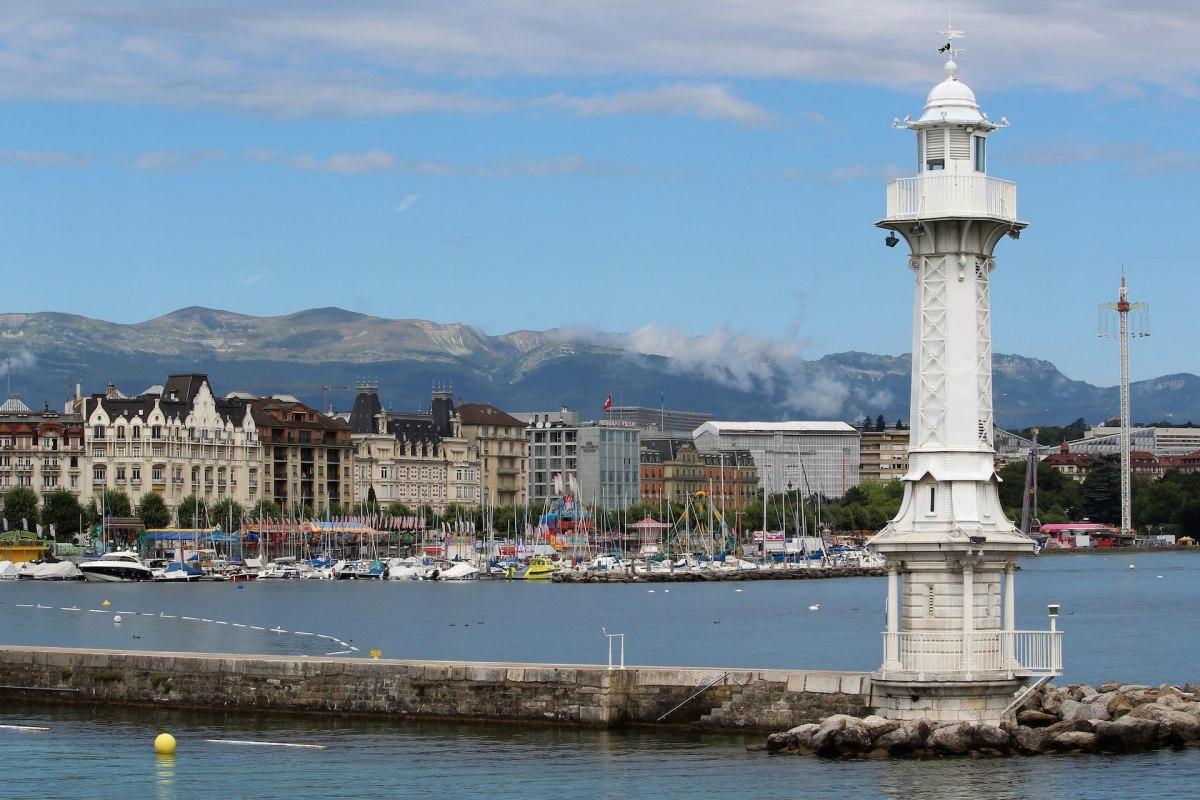
Bain des Pâquis on Lake Geneva
Sitting at an elevation of almost 400 meters, the Swiss shoreline treats visitors to amazing views of the majestic Alps and Mont Blanc, while charming towns and villages dot its picturesque coast, including Montreux, and Lausanne.
The lake enjoys a temperate climate, making it a great destination for summer activities. Whether you opt for a leisurely cruise on the lake, bathe at the Bain des Pâquis, or prefer a peaceful stroll along the numerous surrounding trails, you’ll love the mountain scenery creating a postcard-perfect backdrop.
3. Old Town
Located in the very heart of the city, the Old Town (locally known as the Vieux Genève) is set high above the lake.
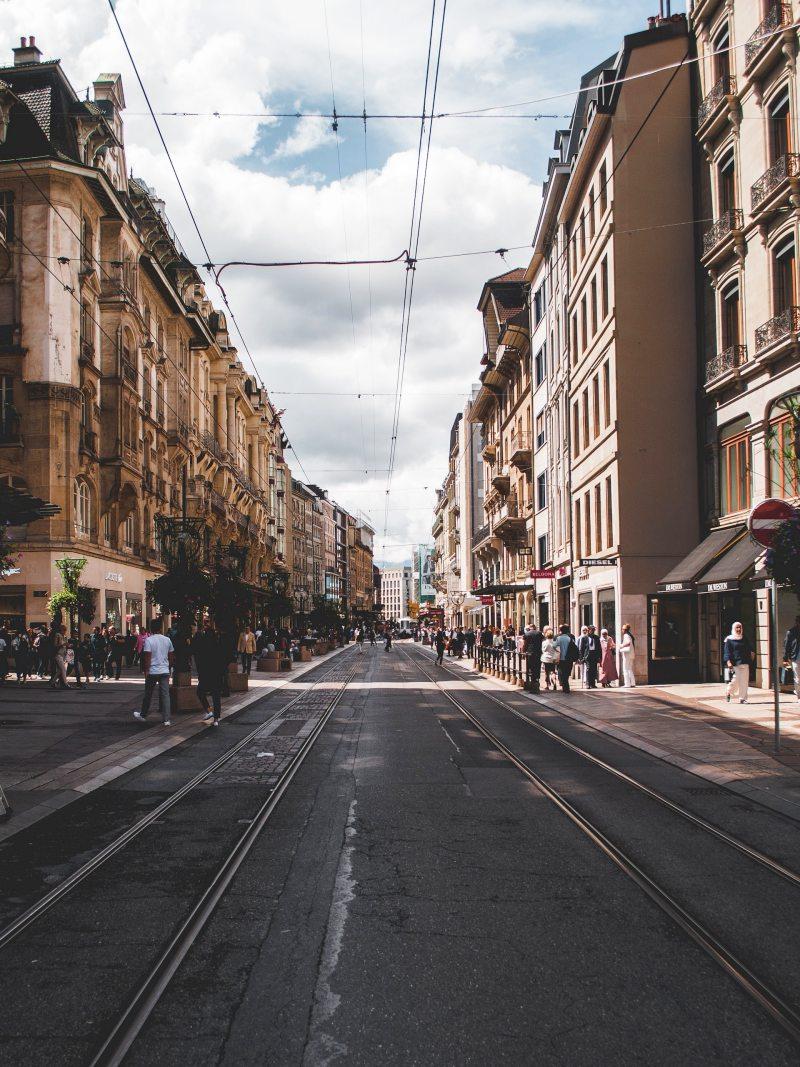
The winding streets and buildings date back to the 18th and 19th centuries, but the plans used to build this Old Town date back to the Middle Ages. The buildings of the Old Town are recognizable by the stone used for their construction, the grey molasse stone from Lake Geneva.
The Old Town hosts several sights to discover, including the St. Pierre Cathedral, the City Hall, the Maison Tavel, and the Place du Bourg-de-Four.
4. St. Pierre Cathedral
St. Pierre Cathedral towers above the historical center. One of Geneva’s must-dos is to climb the 150-ish steps to the top of the north tower, which offers a magnificent panoramic view of both the city and the lake. On a clear day, you can even see the Mont Blanc peak!
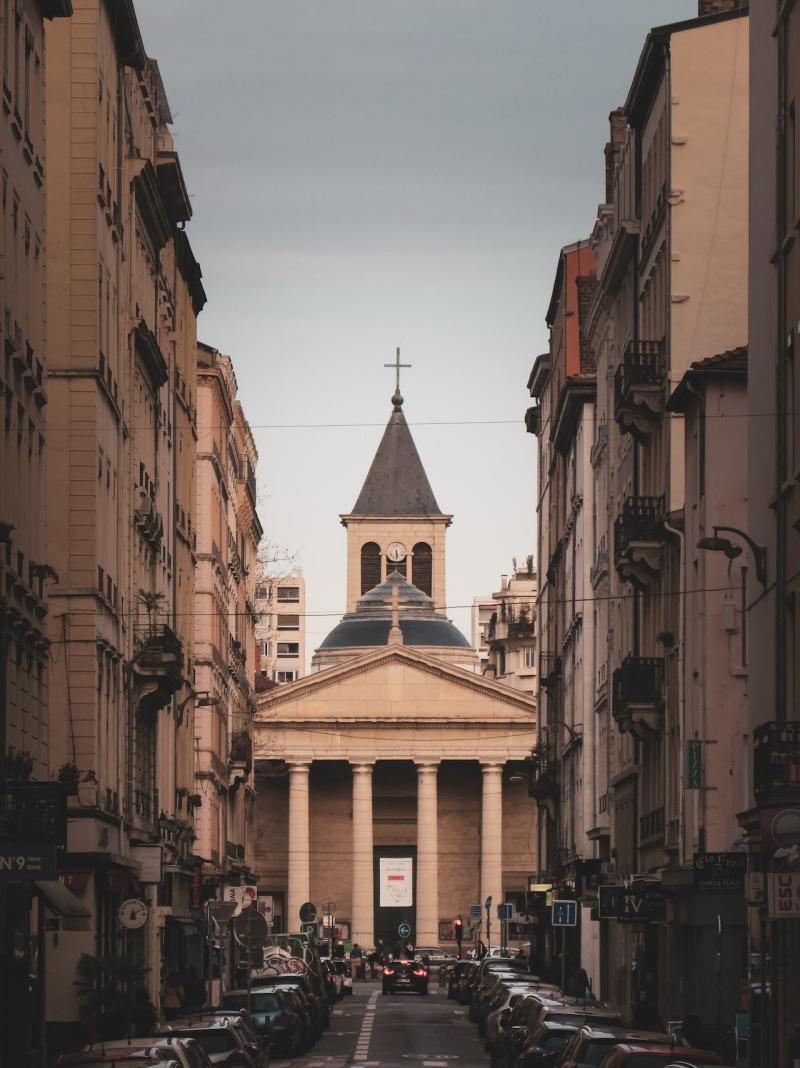
Started in 1160 and completed a hundred years later, what is also known as Geneva Cathedral is the oldest church in town. It has been restored and rebuilt many times, notably following fires, and today combines Romanesque, Gothic and Neoclassical styles.
Although the interior of St. Peter’s Cathedral is rather modest in keeping with Protestant tradition, it does have a few surprises in store. Beneath the cathedral lie the ruins of older churches (some dating back to the late 4th century), an interesting archeological visit to do.
5. Palais des Nations
Located in the international district of Geneva inside the Ariana Park, the Palais des Nations is home to the United Nations Office since 1946.
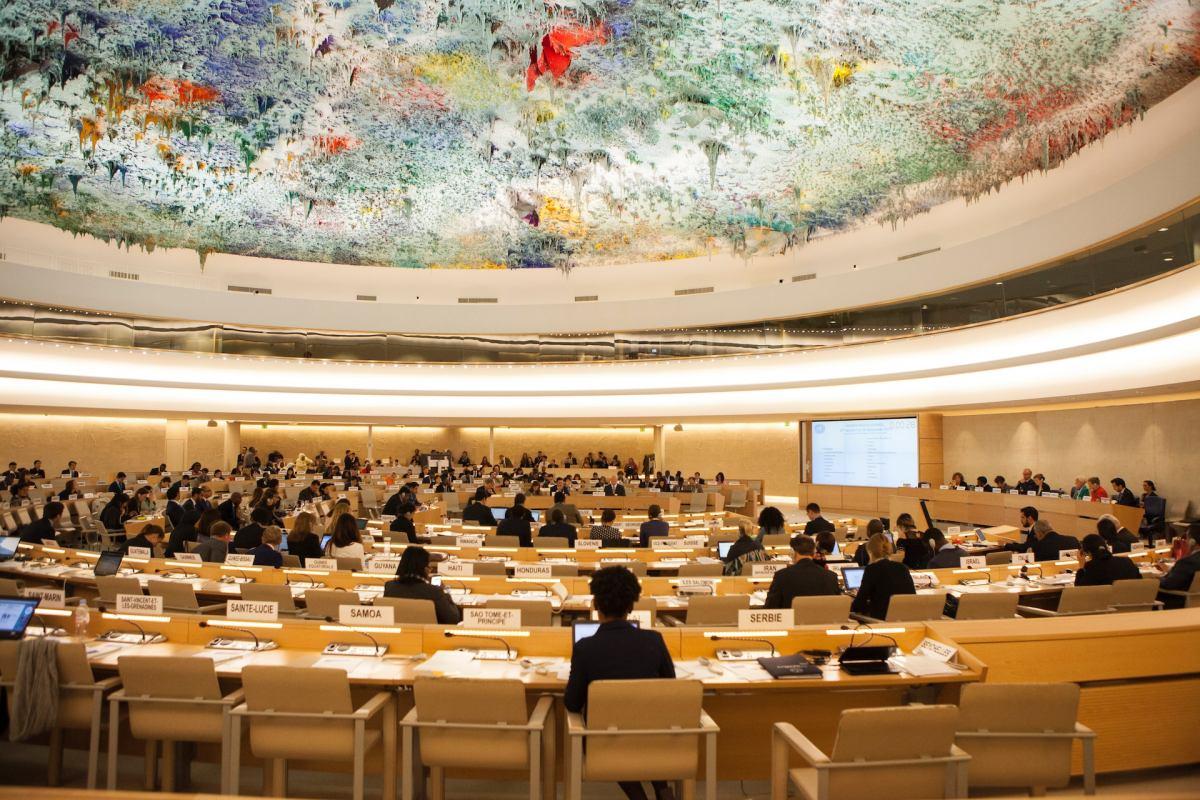
Palais des Nations’ Human Rights and Alliance of Civilizations Room
Built between 1929 and 1936, this UN set of buildings constitutes the world’s second-largest UN headquarters after the New York office. Inside, the Assembly Hall (the largest room in the palace) can seat up to 25,000 delegates to organize world peace.
Visitors can take guided tours to visit some rooms, marvel at the beautiful ceiling of the Human Rights and Alliance of Civilizations Room, and wander through the park graced by century-old trees, monuments, and artworks.
6. Broken Chair
Likely one of Geneva’s symbols alongside the Jet d’Eau, the Borken Chair has graced the area across from the Palais des Nations since 1997.
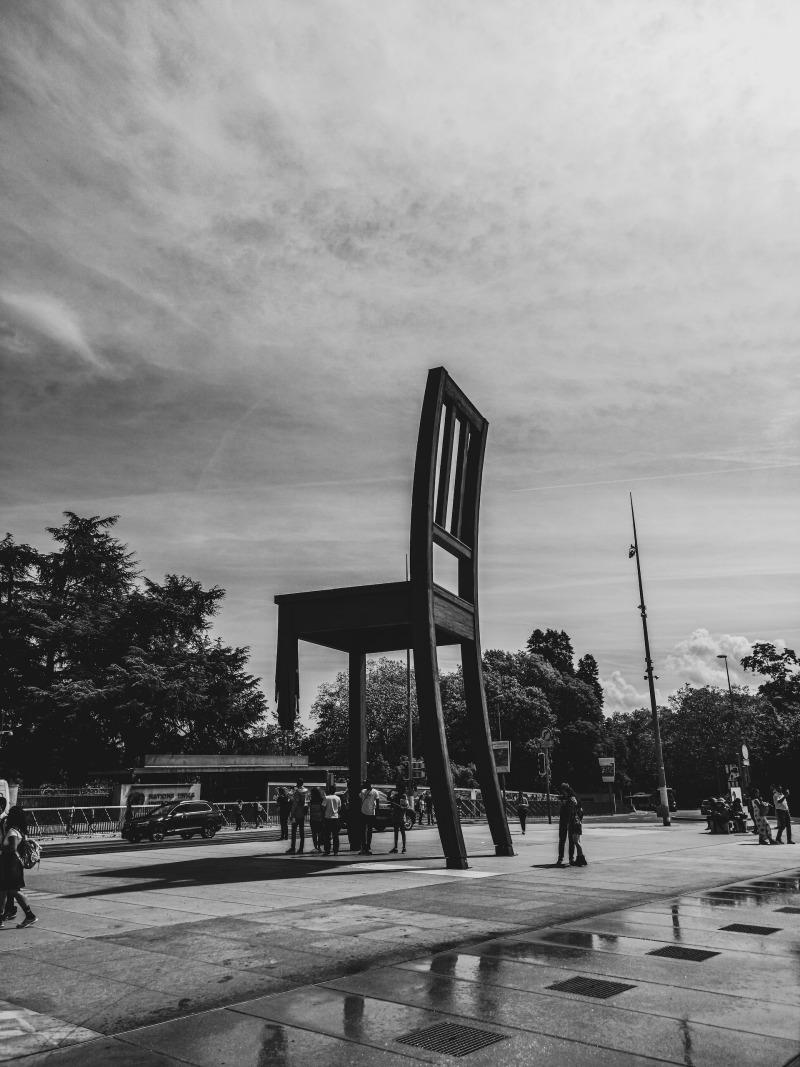
Designed by the Swiss artist Daniel Berset, the chair was placed there by the City of Geneva at the request of Handicap International to demonstrate its opposition and fight against the use of land mines and cluster munitions.
This 12-meter-high wooden chair stands on 3 legs, the fourth having fallen victim to a cluster bomb. Despite this, the chair stands tall and proud – that’s the message conveyed by this monumental sculpture.
7. Botanical Garden
Spread across nearly 28 hectares, this vast green space is a haven of peace in the middle of the city jungle, not far from the Ariana garden and Lake Geneva.
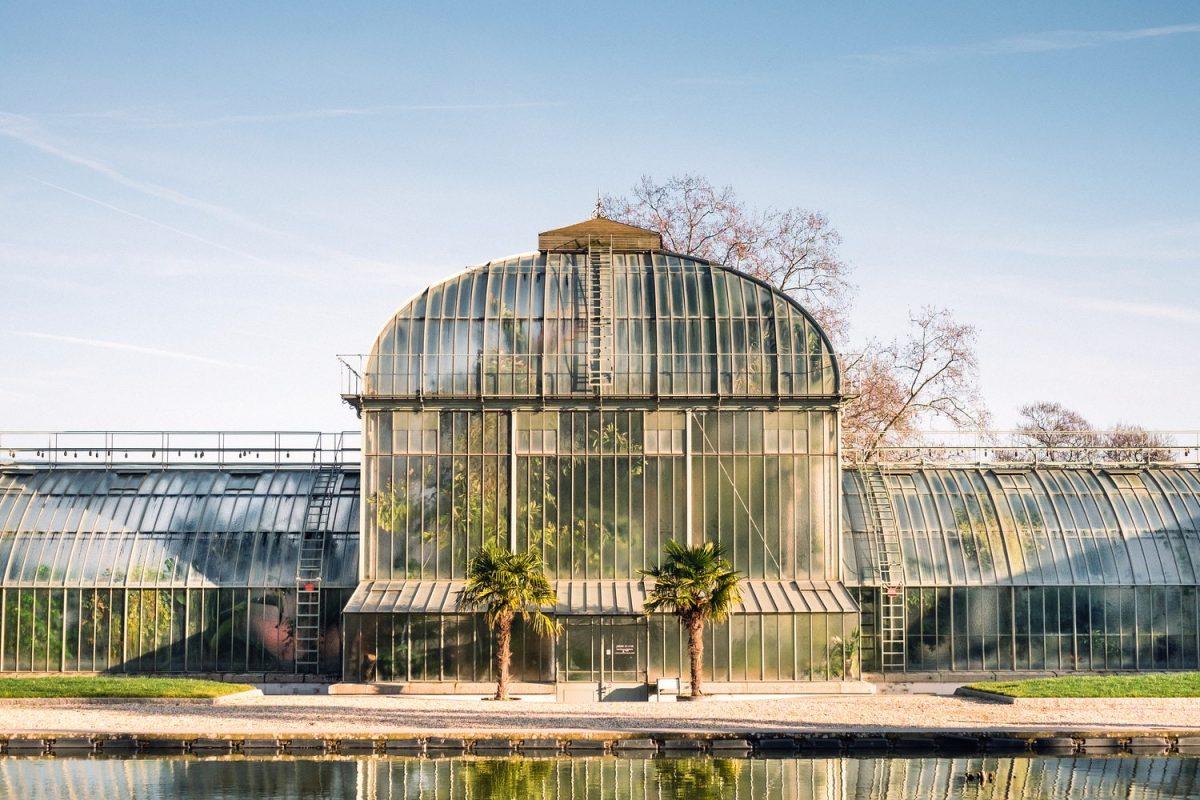
Combining beauty and serenity, the park showcases an incredible diversity of flowers, boasting an impressive collection of almost 16,000 species from all around the globe.
If you’re there, make sure to discover the secrets of this one-of-a-kind garden, with its arboretum, animal park, greenhouses, and herbarium containing 5 million samples, as well as the Conservatoire public library, with its 220,000 books. A very instructive visit, especially on rainy days!
8. Jardin Anglais
On the shores of Lake Geneva, not far from the Jet d’Eau, lies the magnificent Jardin Anglais (English Garden), a peaceful spot ideal for strolling.
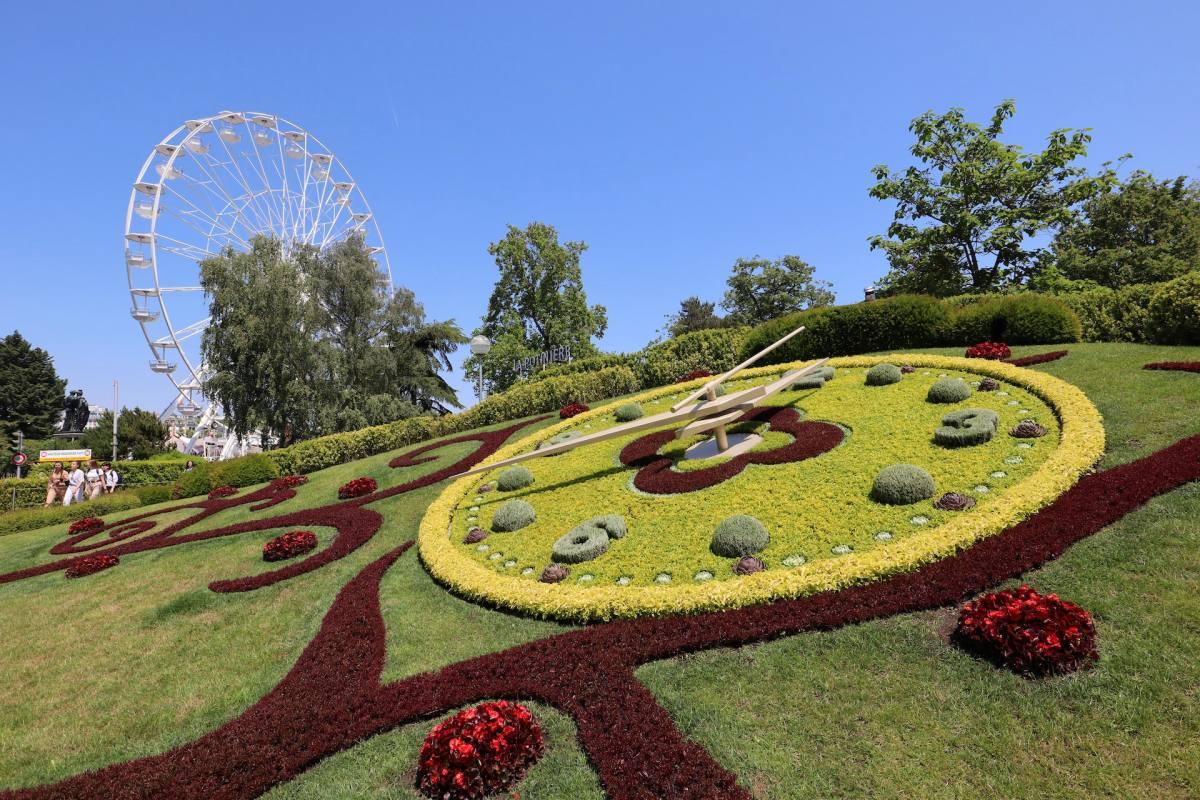
The Flower Clock in the Jardin Anglais
The garden was first laid out in 1850, but its construction was spread over a very long period, and it has continued to evolve and be improved over the years. It was originally called La Promenade du Parc but was eventually named Jardin Anglais after its typically English landscaping.
Some of its features are not to be missed, in particular the Flower Clock. Probably the most photographed clock in the country, it’s made up of no less than 6,500 plants and flowers. The Fontaine des Quatre Saisons and the Monument National are other highlights worth seeing.
9. Brunswick Monument
Brunswick Monument is a beautiful tomb in the Jardin des Alpes on the shores of Lake Geneva, not far from the Mont Blanc Bridge.
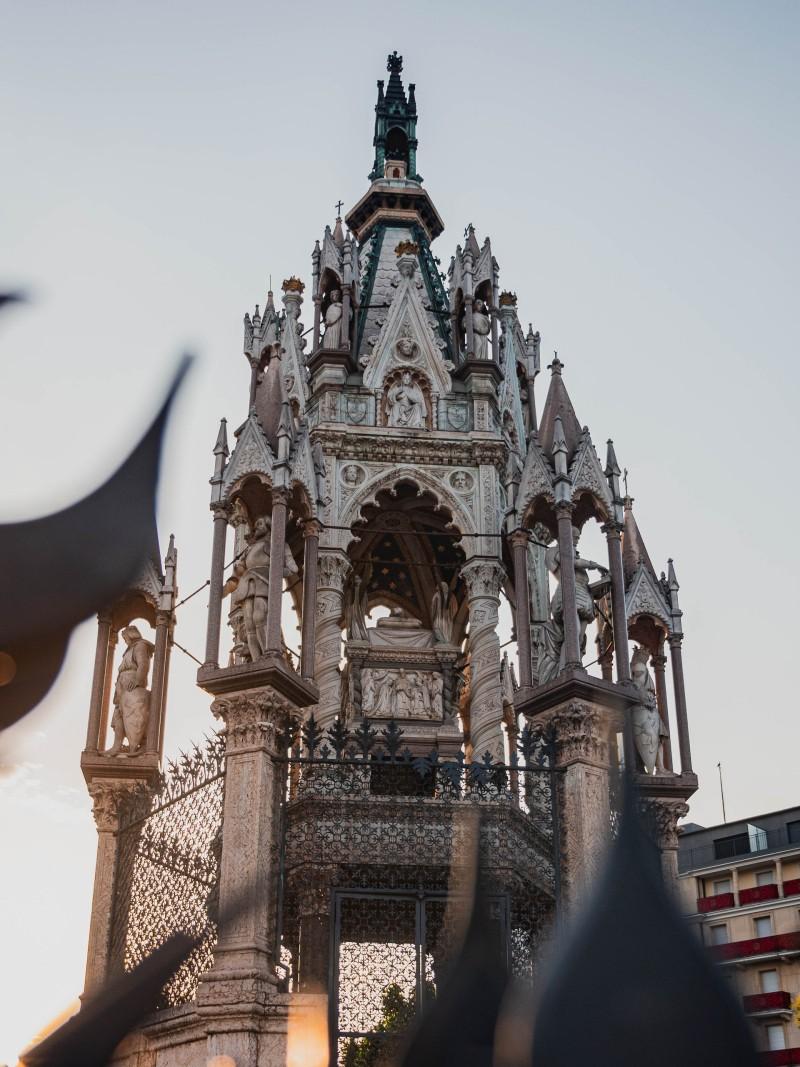
This neogothic mausoleum was erected as a tribute to Duke Charles II of Brunswick in 1877, who had bequeathed his entire fortune to the city of Geneva a few years earlier.
This magnificent structure, surmounted by the duke’s bronze equestrian statue, is made of noble materials such as white Carrara marble and pink Verona stone. All in all, a lovely monument that deserves a look.
10. Art and History Museum
The Museum of Art and History is located right next to the University of Geneva and not far from St. Peter’s Cathedral.
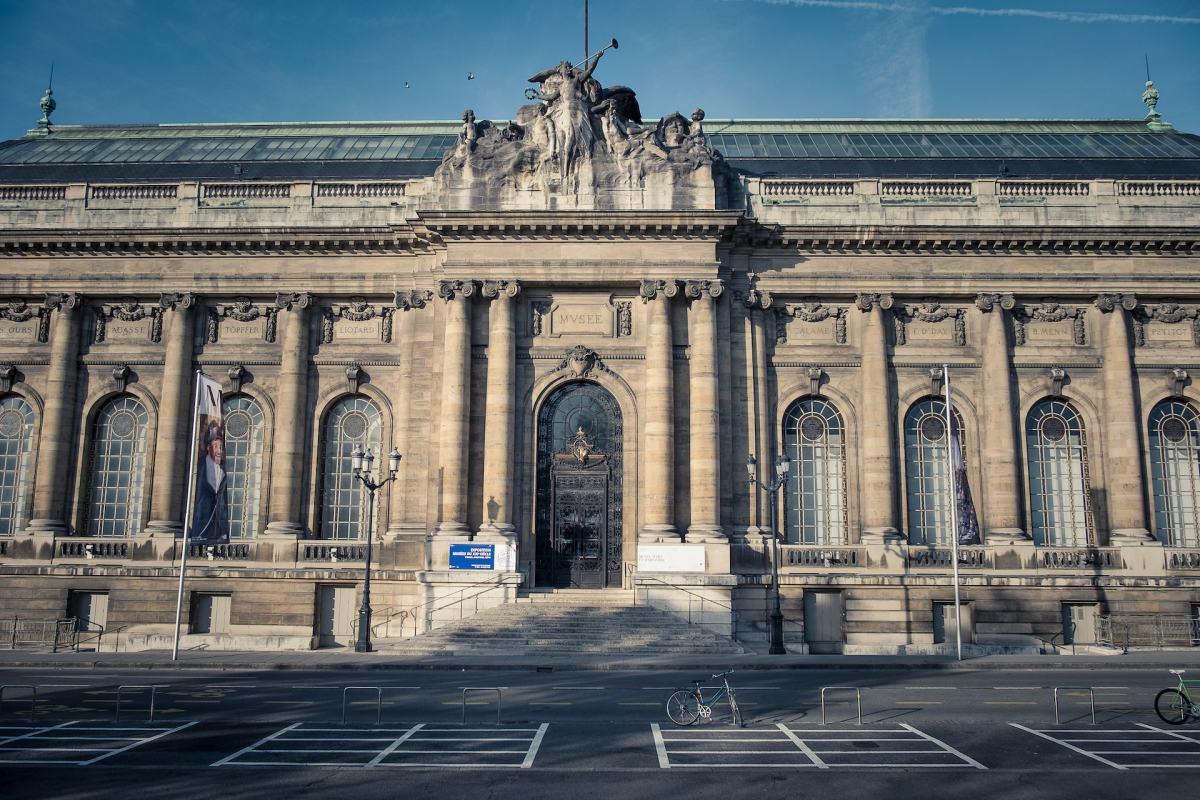
Housed in a strikingly beautiful building, it was inaugurated in 1910, but only completed in 1940. This multi-disciplinary art museum offers a diverse array of exhibitions and collector’s pieces over 5 levels, including painting, architecture, archaeology, sculpture, and applied arts.
A must-see within the museum is Witz‘s renowned masterpiece, “The Miraculous Draught of Fishes”, one of the 2 panels from the altarpiece in Geneva Cathedral.
11. Reformation Wall
The Reformation Wall spans 100 meters in the Parc des Bastions, which is part of the University of Geneva.
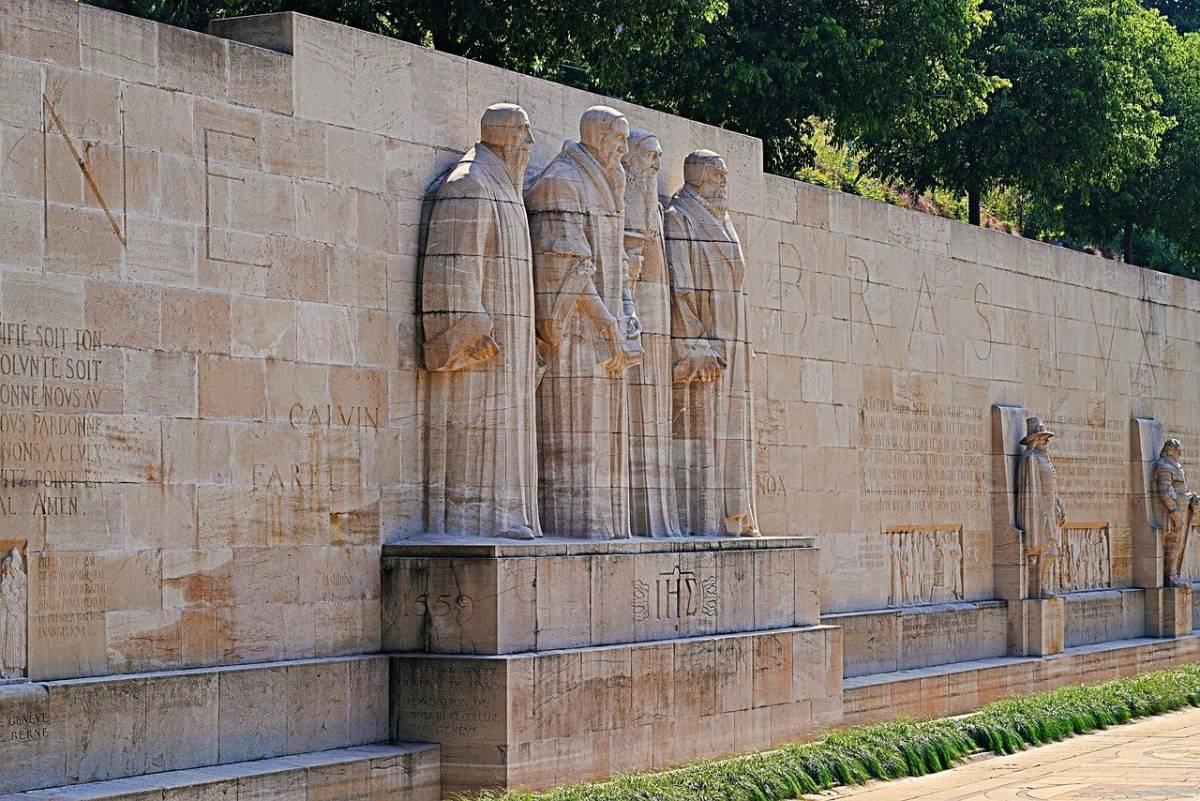
The wall was built in 1909 to mark the 400th anniversary of the birth of Jean Calvin and the 350th anniversary of the founding of the University of Geneva (formerly known as the Academy of Geneva).
The wall leans against Geneva’s old walls and is surrounded by a small moat filled with water. The whole structure is made of stone and adorned with bas-reliefs depicting important figures of the Protestant Reformation in Europe, including the most famous: William Farel, John Calvin, Theodore Beza, and John Knox.
12. Philippe Patek Museum
The Philippe Patek Museum, situated in the heart of the watchmaking capital, is an intriguing and unique museum that definitely deserves a visit.
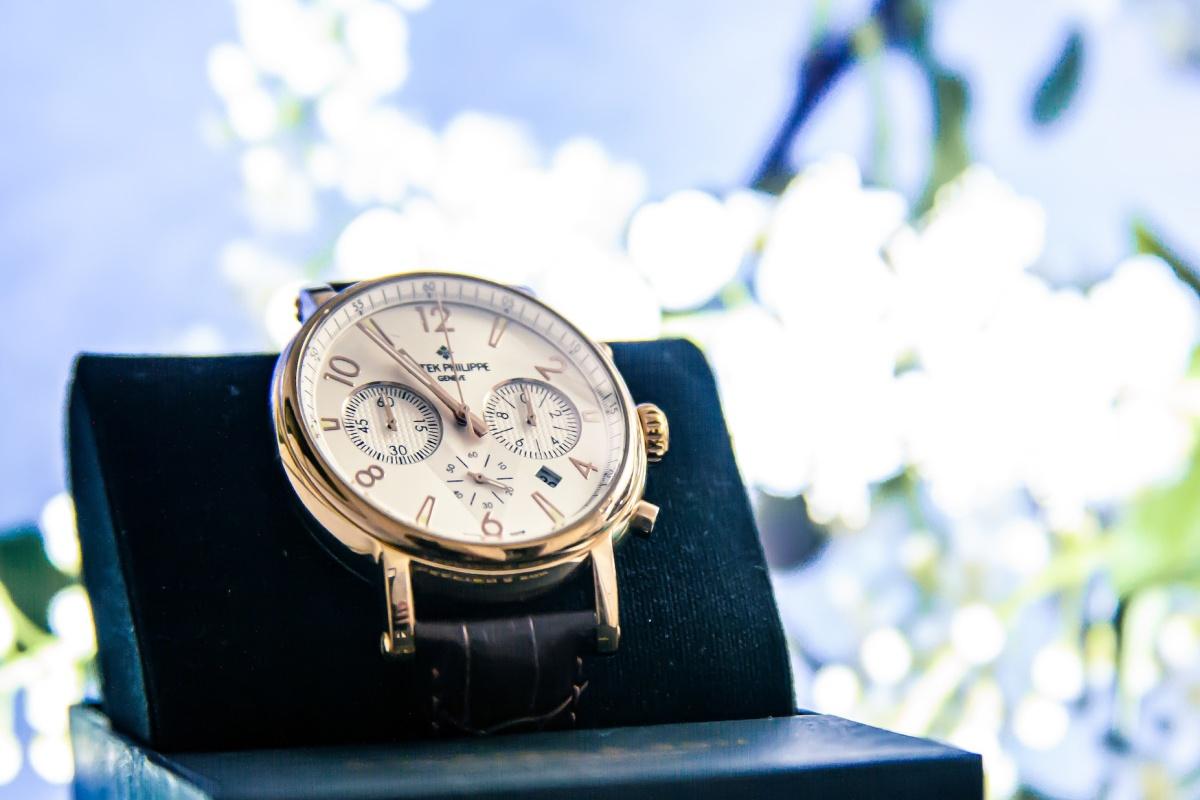
This museum traces the history of Geneva’s watchmaking and enameling industries from the 16th to the 20th century. With 4 levels to explore, visitors can marvel at an impressive collection of clocks, watches, enamels, and various other horological treasures.
Among the highlights are some remarkable pieces, such as a tiny clock mounted on a ring, which catches the eye due to its uniqueness. Also, you can discover the super intricate clock mechanisms or the mind-blowing patterns and details of some timepieces.
Want to discover more about Switzerland? Check out the 30 most famous landmarks in Switzerland.
Map of the Geneva Switzerland Landmarks
Here’s the map of the 12 famous Geneva landmarks listed in this post. To get it, simply click on the image below to open it in Google Maps. Then click on the “star” icon to save it to your own maps.
I hope you could’ve found the information you needed and that you know what you’ll do for your next travel to Geneva thanks to this post. If you enjoyed it, don’t hesitate to share it or comment below, I love reading your feedback! 🙂
Before you go, here are more amazing world landmarks to discover:
- Famous Landmarks in Rome
- Famous Landmarks in Paris
- Famous Landmarks in London
- Famous Landmarks in Madrid
- Famous Landmarks in Athens
And even more on this page.
Travel Tools
Use any of our recommended links below to book your trip. You pay the same, and we earn a small fee; a great way to support us!
Pin this to Pinterest!
Enjoyed this guide? Then help a fellow traveler and pin it! They'll most definitely love you for it, 100% guarantee.
